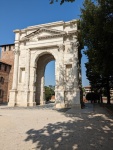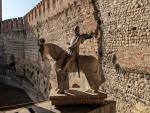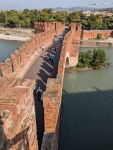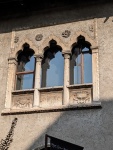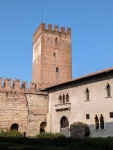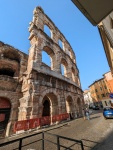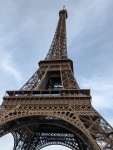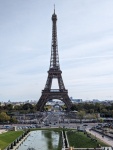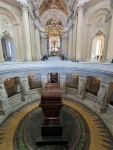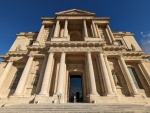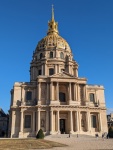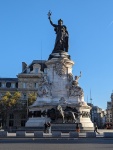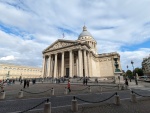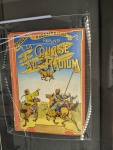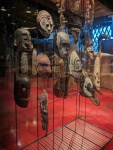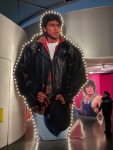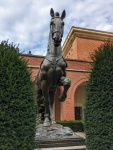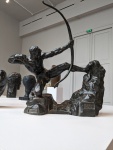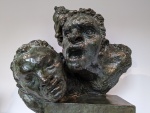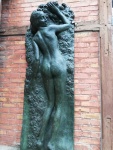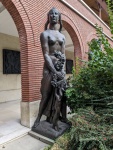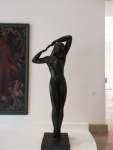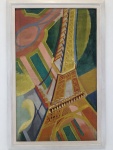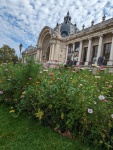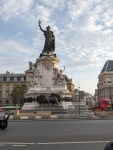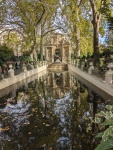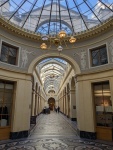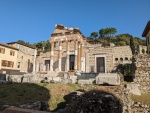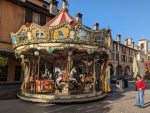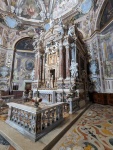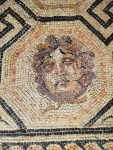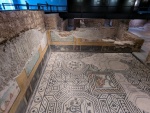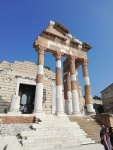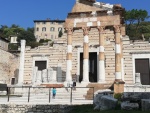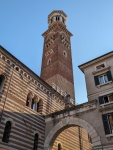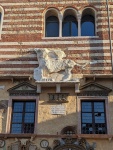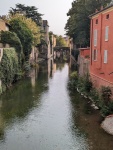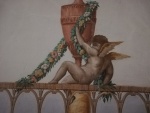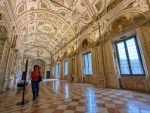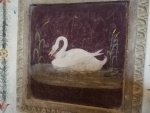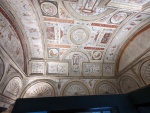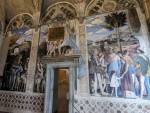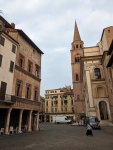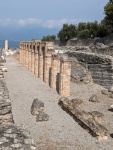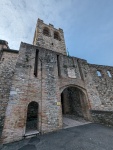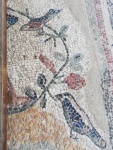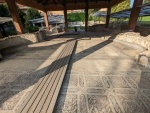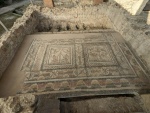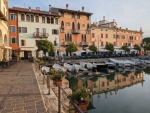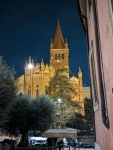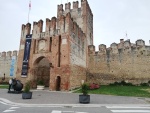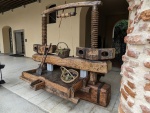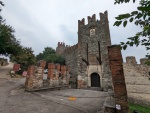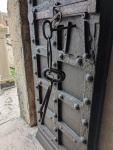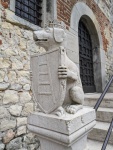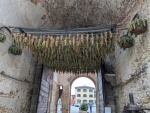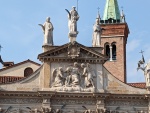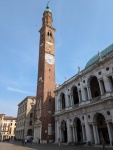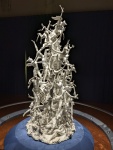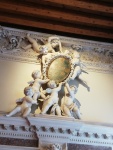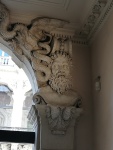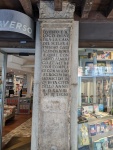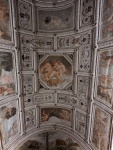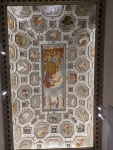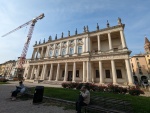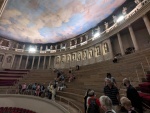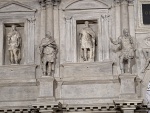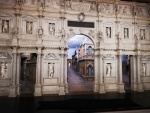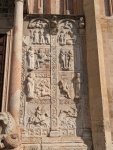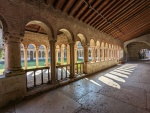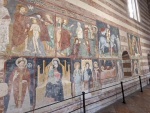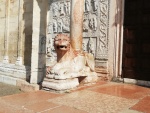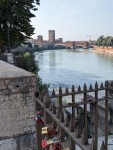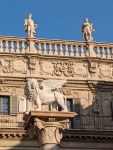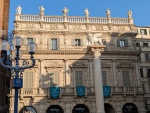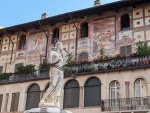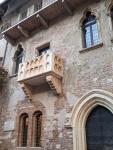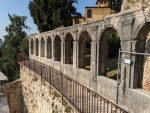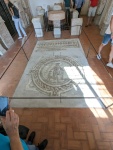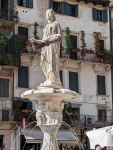We so enjoyed our trip to Northern Italy in 2022 that when Susan had a conference in Paris in October 2023, we decided to explore more of that region. We decided to explore a different corner of the Veneto/Lombardy and after some research, decided to base ourselves in Verona, which had plenty to offer as a city on its own and had many interesting day trips.
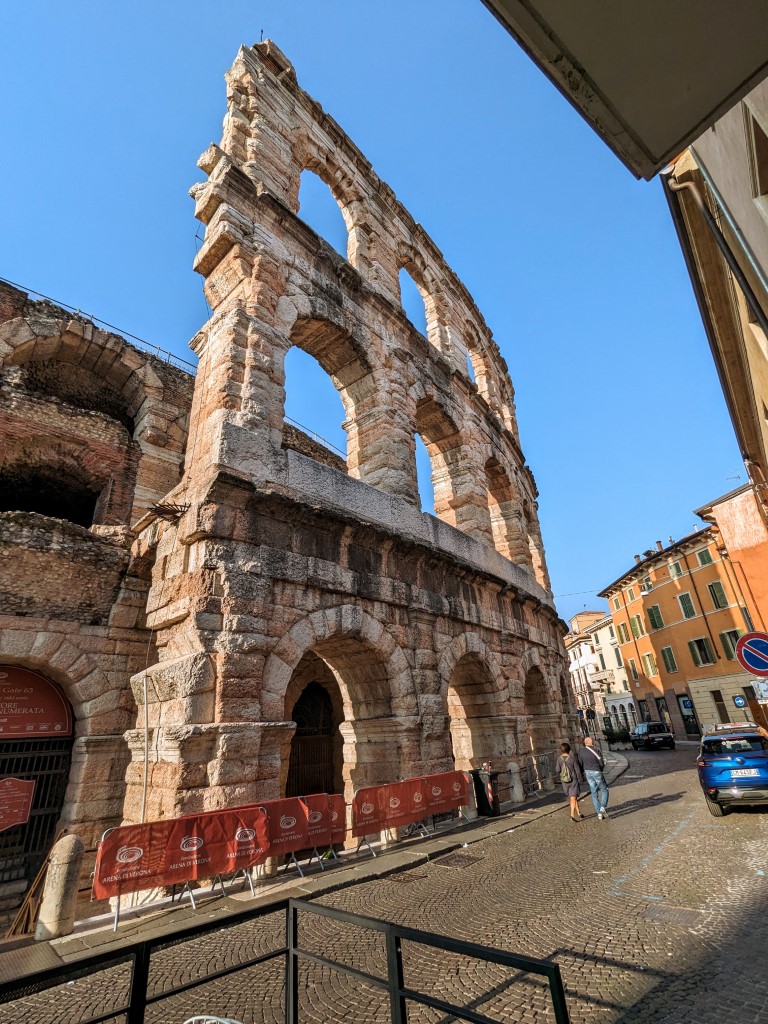
We flew to Milan and had planned to take an express train to Verona, but as usual the Italian railway system had other plans for us. Our planned train was cancelled, so we ended up on a local train that left an hour later and took just a bit longer. It took us a bit to figure out how to buy a bus ticket from the train station to central Verona in our jet-lagged state, but someone finally explained the ticket machine to us.
We spent a couple of days visiting the museums and sites of Verona, skipping the biggest and most touristy attraction, the “House of Juliet” . Several decades ago, the clever politicians of Verona added a balcony to a medieval house and declared it La Casa di Giulietta. Since Shakespeare never visited Verona and the wonderful story of Romeo and Juliet is pure fiction, the long lines of tourists waiting to enter the site are a tribute to the clever civic boosters of Verona!
We chose our Verona Airbnb due to its location and high ratings. We saw that there were Roman ruins across from the building’s entrance (Lion’s Gate) but weren’t ready for how awesome they were. Below grade were the remnants of the original Roman city.
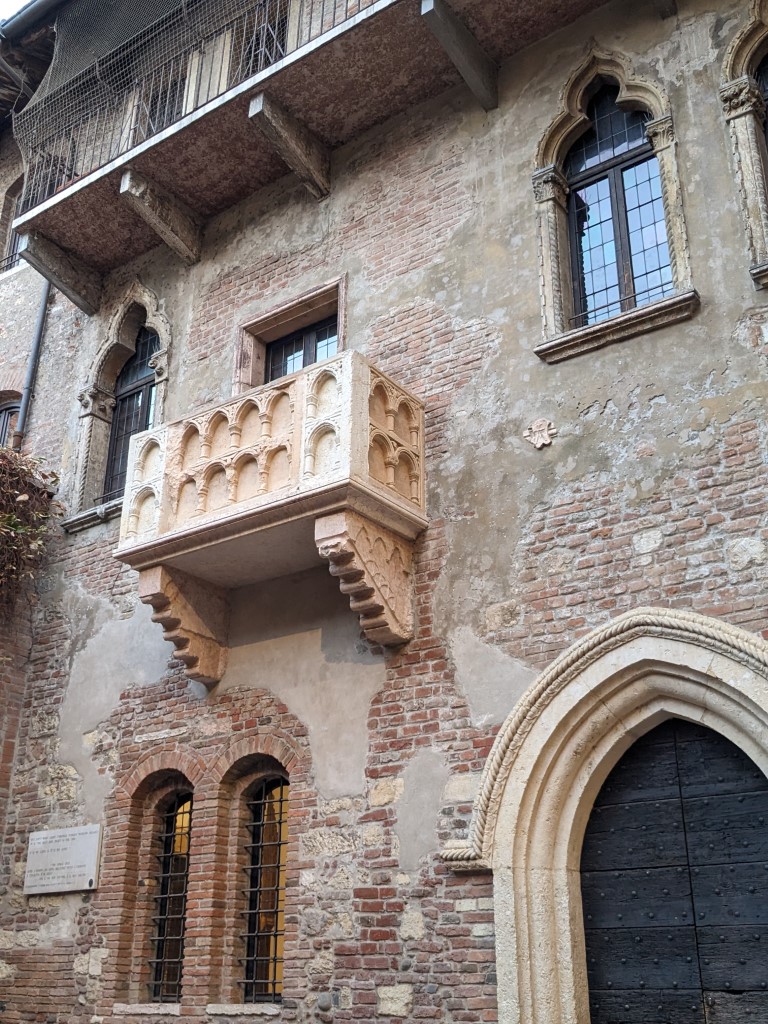
Each day, the biggest decision was which fabulous restaurant to go to. Relying on recommendations from the owner of our Airbnb and google review, we had amazing dishes, including pumpkin-stuffed ravioli….(what else?) and other dishes. Soave is the wine of this region and we had some wonderful examples with our meals.
We spend a day in Vicenza, viewing all the Palladian architecture. A highlight was an amazing theater built in 1585, the oldest enclosed theater in the world. We sat on the wooden benches marveling at the stage for quite awhile.
Lake Garda is well known for its spectacular scenery, lakeside villages, castles, and Roman Villas. We took the train to Desenzano del Garda to view the small Roman villa. From the train station, it was a short walk to the Porto Vecchio – the old harbor, and then to the Roman Villa. The villa is comprised of intricate mosaics in a small complex. We were the only ones there for most of the time. A short hike brought us to the castle – a rough stone medieval complex.
The villages of Lake Garda are connected by ferries and buses. From Desenzano del Garda, we took a short ferry trip to the star of the region: Castello Scaligero di Sirmione. This picturesque castle is situated as the bridge to the island of Sirmione. Although it was packed with hordes of tourists, it was still an amazing sight. We proceeded thru the gates to the 1.5 km path to the largest Roman villa we’ve ever seen: Grotte di Catullo e Museo Archeologico di Sirmione. Looking more like a city than a simple villa, this complex illustrated the stunning wealth that some of Romans attained. We made our way back to the ferry dock and proceeded to our last stop: Peschiera del Garda, where we stopped for lunch, a walk by still more roman ruins, and a tour of the medieval village. While we were about to board a train back, we saw a bus that went to Verona and grabbed that instead. As with our other day trips, it was easy to navigate the trains and buses.
Mantua was a surprise. The city has maintained its medieval core, centered on the Palazzo Ducale. This sprawling museum was a treasure trove of artifacts from the region, an 11th century circular church with exquisite murals, and its exceptional food, such as a ravioli-type pasta called Tortelli di Zucca. This life changing delicacy was slightly different in every restaurant in the region, but was at its very best in Mantua. Mantua is also known for its salamis, which we tried.
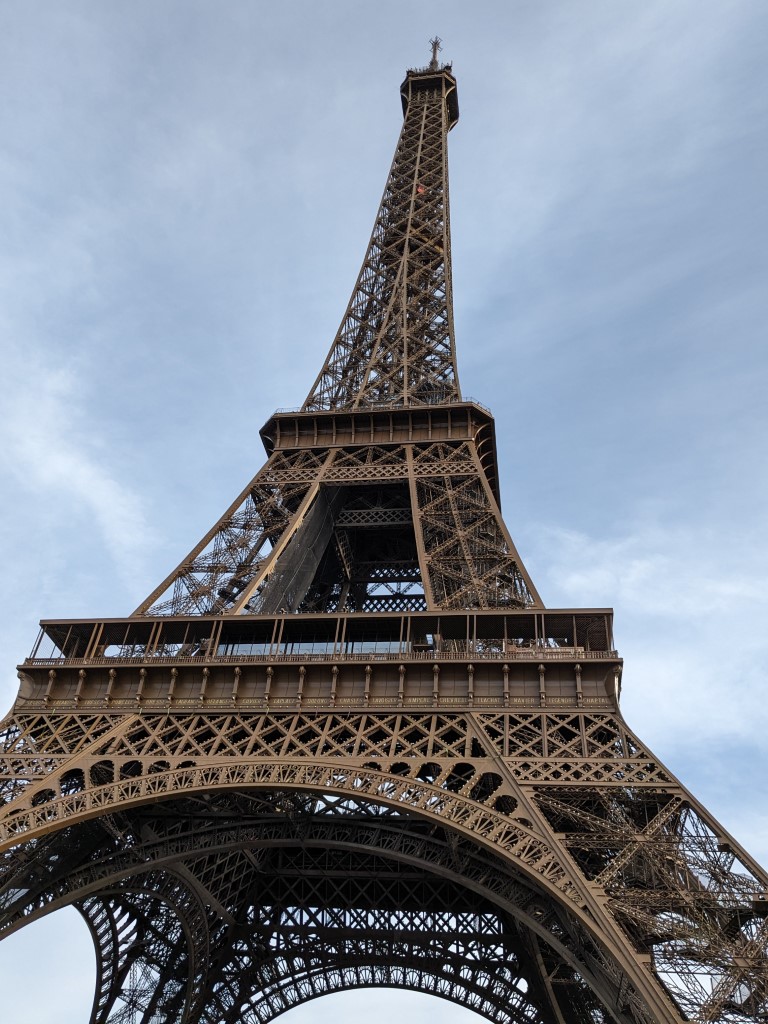
Our flight to Paris was from Bergamo Airport, so we relocated to Brescia for the last day. Besides staying at a superb hotel, Brescia was an amazing city that could have kept us occupied for much longer. The city is made up of large, distinct renaissance squares, all a stone’s throw from one another. The baroque architecture and fountains were extraordinary. There’s a Roman theater, Roman museums, and a hilltop castle. We were sorry not to have an extra day there.
These are a few of the restaurants we dined at:
Trattoria Gasparo, Brescia
Recommended by our hotelier, this was our best dinner in Italy. We made reservations (which is essential in most restaurants in this region), and shortly after we arrived, it was filled to capacity. We sat and watched while many people were turned away. Unlike many of the places we dined at, Trattoria Gasparo’s guests were Italian. When the food arrived, we quickly learned why it was so popular with the local crowd. We started with an antipasto – a tagliere of local Italian hams. Many were flavorful and imprssive. We ordered the two of the dishes that Brescia is known for: Casoncelli alla Bresciana and Mericonde with Butter and Sage. Casoncelli is like tortellini, but with a thinner, finer pasta, and a deeply flavored filling. Mericonde is like a meatball, but made with spinach, bread, garlic, milk – and no meat. While this may not sound exotic, the flavor extraordinarily delicious. The service was amazing. The maître d’ personally helped us with the menu and made sure that everything was perfect.
Osteria da Ugo, Verona
Although in the historic center near the so-called “Juliet’s Balcony”, it was recommended by our host. Their menu had many of the dishes were had read about, and the ratings were very good. This restaurant was more than just “very good,” it was the one of the very best. We ordered the Tortelli de Ugo, a ravioli-type dish which was highly addictive. We wound up ordering some ravioli variation at every dinner while we were in Italy. We also ordered Gnocchi Funghi, which had chanterelle and porcini mushrooms in a seasoned cream sauce. The gnocchi in this region is smaller and deeply flavored, not the usual unseasoned potato-based lumps one sees in the USA. The service here was impeccable. Due to an insignificant problem, the waiter effusively apologized and brought us free appetizers.
Pero d’Oro, Verona
We chose Pero d’Oro because it was outside the tourist center. Typically, restaurants that depend on locals and/or people who make a special trip need to rely on food quality and service – and Pero d’Oro didn’t let us down. The dinner was superb. Tortelli alla Zucca is one of the typical dishes of the regions, and habit forming. It’s more than just pumpkin and sugar – it has nutmeg and complex spicing, and a touch of coconut and each restaurant’s offering is slightly different. The tortelli de carne was also superb. The service was impeccable – friendly, attentive, but not overbearing.
Osteria la Fregola, Verona
Although Osteria La Fregola is just outside the tourist center, we walked by this restaurant numerous times. Their seating under the arches of the arcade were enticing, but it was a bit brisk so we opted to dine in the cellar. The service was delightful – a young waiter who studied English by watching “Breaking Bad” during covid, and mastered nuanced American English with only a trace of an Italian accent. We ordered the gnocchi with speck (a type of ham), which was different than the gnocchi that we buy in the USA – smaller, and more deeply flavored. We also ordered the tagliatelle and a glass of grappa. This was a superb dinner!
